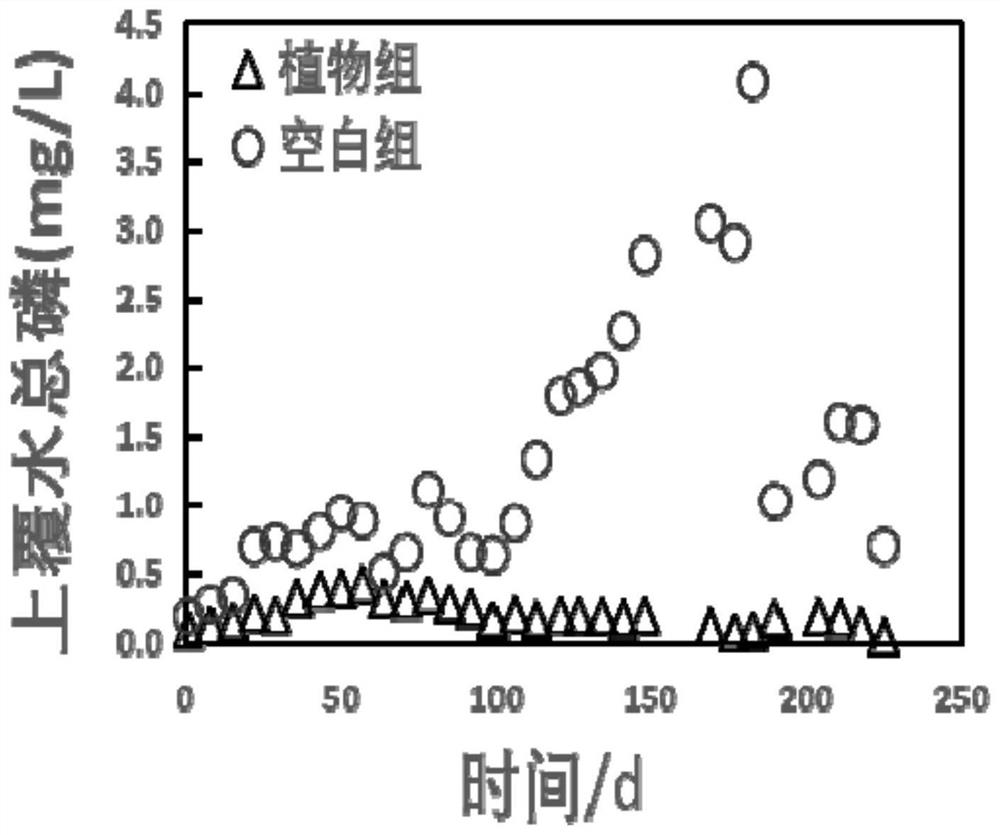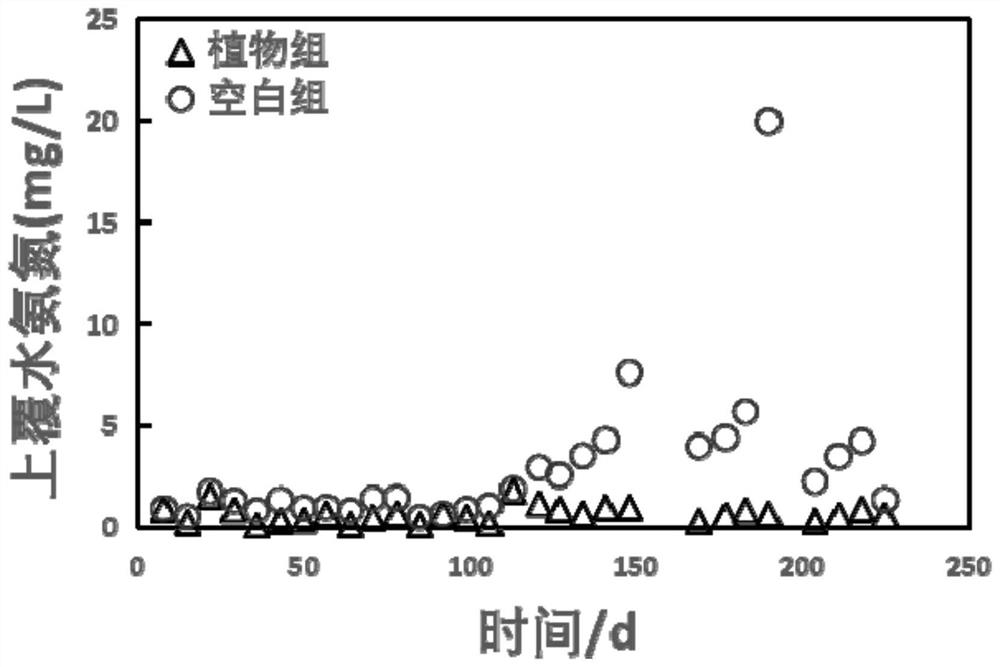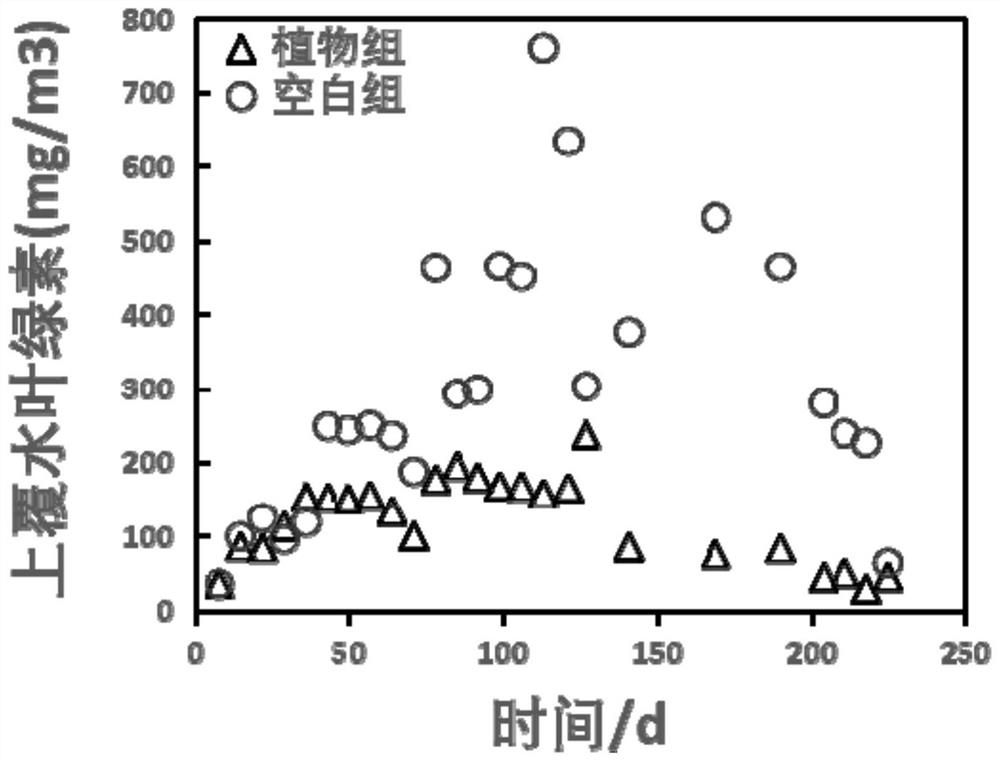Application of weed-like submerged plants in paddy fields in the treatment of black and odorous water bodies
A technology for black and odorous water bodies and submerged plants, applied in biological water/sewage treatment, water/sludge/sewage treatment, applications, etc., can solve problems such as light intensity affecting the growth of aquatic plants and water quality deterioration
- Summary
- Abstract
- Description
- Claims
- Application Information
AI Technical Summary
Problems solved by technology
Method used
Image
Examples
Embodiment 1
[0043] Domestication of Sagittarius dwarf plants adapted to the conditions of black and odorous bottom mud.
[0044] In August 2016, the black and odorous sediment in the river channel was collected in the Pingshan River, a black and odorous water body in Shenzhen, and the rice was collected in the Experimental Farm of the Key Laboratory of Agricultural Ecology and Rural Environment of Guangdong Province General College of South China Agricultural University (near Cencun Bridge, Tianhe District, Guangzhou) Soil (rice paddy has been cultivated continuously for more than 5 years), and the growth substrate for domestication is prepared: add the black and odorous bottom mud collected from the river to the paddy soil, and mix the two evenly. The growth substrates with sediment contents of 30%, 50%, and 70% (volume ratio) were prepared. Adaptation and domestication of rice field weeds to black and odorous river sediments.
[0045] Paddy field weeds were selected as the Arthroatia d...
Embodiment 2
[0051] Growth of domesticated Sagittarius dwarf plants in simulated black and odorous water body and its improvement on overlying water and sediment pollution
[0052] In May 2017, the black and smelly bottom mud in the river was collected in the Pingshan River, a black and smelly water body in Shenzhen, and nine 60L plastic drums were placed on the open-air balcony on the ninth floor of South China Agricultural University. The bottom mud was put into the bucket and spread 15cm thick.
[0053] Domesticated and well-growing Sagittarius dwarfs were selected and transplanted in 6 plastic drums (the seedlings were collected from four paddy fields near Xijiang River Basin, Beijiang River Basin and Huanong in Guangdong). The buckets without transplanting plants were used as the blank group. At the beginning, because the root system of Arthia sativa was not firmly established in the bottom mud, a small amount of tap water was added, and more water was added after 1 to 2 weeks. The wa...
Embodiment 3
[0064] Growth of domesticated Sagittarius dwarf plants in simulated black and odorous water body and its improvement on overlying water and sediment pollution
[0065] In July 2017, black and smelly sediment was collected from a river in Shuibei Village, Shipai Town, Dongguan. The river is connected to the Dongjiang River, and the gate is usually closed. Only when heavy rainfall causes excessive water volume, the gate will be opened to release water. Therefore, it is basically a stagnant river. Due to years of domestic and factory sewage, the river is black and smelly. The contents of volatile sulfides, ferrous iron and ammonia nitrogen in the river sediment are 1500.45mg / kg, 5.1g / Kg and 90.12g / Kg respectively. The sediment collected from this section of the river is used for experiments, and the method is basically the same as that of the actual case. However, only 3 seedlings were set in the plant group (collected from the Xijiang River Basin, Beijiang River Basin and a pad...
PUM
| Property | Measurement | Unit |
|---|---|---|
| thickness | aaaaa | aaaaa |
| area | aaaaa | aaaaa |
Abstract
Description
Claims
Application Information
 Login to View More
Login to View More - R&D
- Intellectual Property
- Life Sciences
- Materials
- Tech Scout
- Unparalleled Data Quality
- Higher Quality Content
- 60% Fewer Hallucinations
Browse by: Latest US Patents, China's latest patents, Technical Efficacy Thesaurus, Application Domain, Technology Topic, Popular Technical Reports.
© 2025 PatSnap. All rights reserved.Legal|Privacy policy|Modern Slavery Act Transparency Statement|Sitemap|About US| Contact US: help@patsnap.com



